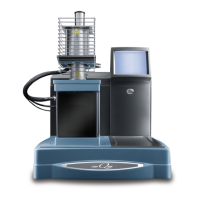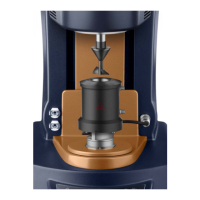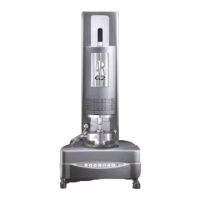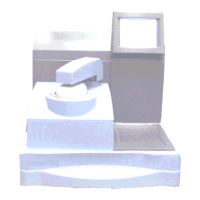TA I
NSTRUMENTS
TGA 2950 B–39
Hi-Res
TM
Option
between the rate of weight change (%/minute)
and heating rate (
°
C/minute). As percent/minute
increases heating rate is reduced by the control
algorithm, but the reduction in heating rate
usually causes an accompanying reduction in
percent/minute, and vise versa. Therefore,
attempting to directly compute optimal resolu-
tion settings from percent/minute information
gathered from previous runs becomes a very
questionable and usually frustrating experience.
Let us then consider what guidelines and rules-
of-thumb we can use to help make the selection
process easier. As stated earlier in the section
on Hi-Res
TM
ramps, if you do not know what
resolution setting to start with, try resolution
+3.0 and 50
°
C/minute heating rate. This will
give a rapid scan with moderate application of
the Hi-Res
TM
heating technique. Results should
be at least as good as a 20
°
C/minute conven-
tional scan of the same material, and will usually
be better. If time permits, it is often helpful to
have a constant heating rate 20
°
C/minute scan of
the material available for comparison.
Useful Resolution Settings
After some experience with Hi-Res
TM
TGA, you
will find that the most useful resolution settings
fall within the range +3.0 to +5.0 for the positive
numbers and -3.0 to -5.0 for the negative num-
bers, and that adjustment by +/-0.5 is usually
adequate. This is similar to the situation with
heating rates. You can adjust heating rate to any
value from 0.01 to 200.0
°
C/minute in steps of
0.01
°
C but most people use 1, 5, 10, 20 and
50
°
C/minute exclusively because a finer adjust-
ment does not produce significantly different
results. With this guideline alone we have
reduced the number of resolution settings to deal

